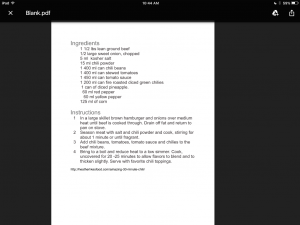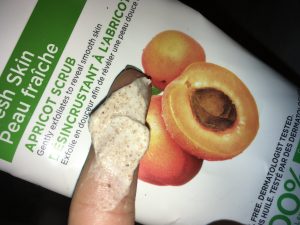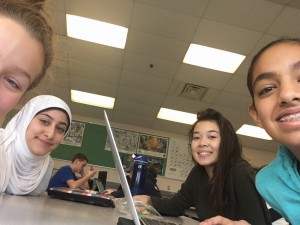How do cells multiply?
In our science class we have been working a lot on mitosis, meiosis, sexual and asexual reproduction. We have also watched videos and listened to lessons about how organisms grow and develop whether its through embryonic of fetal development.
Asexual reproduction: Asexual reproduction is very different from sexual reproduction. In asexual reproduction, the offspring are identical to the parent. They are produced from a single organism and inherits the genes from that parent. Many organisms naturally form clones via asexual reproduction.
There are 5 different types of Asexual reproduction.
Binary fission – Where a single celled organism splits into identical copies. The parent is replaced by 2 daughter cells because it divides in two.
Budding – Some cells split through a process called budding. The offspring is smaller than the parent. The buds grow until they are fully developed nd they eventually break off from the parent
Fragmentation – Fragmentation is a form of asexual reproduction where a new organism grows from the existing organism. The organism may need to use this process if they have undergone a severe injury and need to preform this act to survive.
Spore Formation – Spore formation is generally seen in bacteria, micro-organisms and fungi. One of the cells enlarges and forms a spore sac where the nucleus divides and the daughter nuclei are surrounded with protoplasm bits to form daughter cells called spores.
Vegetative propagation – The process of forming cells using Vegetative propagation is a very different one. Special cells are found in the plants that develop into structures that form new plants that are identical to the parent.
Sexual Reproduction: When a male and female gametes fuse together to form a new individual organism which contains characteristics of both the parents, it is called sexual reproduction. There are a few types of sexual reproduction that is used throughout many different species. The offspring of the parents are genetically 50% their biological mother and 50% their biological father.
You may be wondering as I was, If the offspring is supposed to be 50% the mother and 50% the father, why don’t siblings look identical to each other? Well, to the answer is simple, your genes help to shape what you look like and even though your genes came from the same 2 people, they are not the same. Each parent passes down 1 of their 2 copies of their genes to their kid/offspring. And the copies that are passed down are given at random so they will almost never be the same.
The pros and cons to Asexual and Sexual reproduction
| Pros of asexual reproduction |
Cons of asexual reproduction |
pros of sexual reproduction |
Cons of sexual reproduction |
| -Requires only 1 parent
-speed (Offspring can be created quicker and in greater amounts
|
-if a strand of DNA has been mutated, the same gene will be passed on to the offspring and will continue to be reproduced carrying that mutation.
|
-A completely new organism is created
-The organisms are able to change genetically and evolve.
-With the new organism formed, there is a chance that the offspring will not get any of the parent’s diseases
|
-required both a male and female which makes the offspring more susceptible to genetic disorders.
-the process of the offspring being birthed takes a long time. Ni guarantee that an offspring would even be born (still birth, pre mature) |
Meiosis and Mitosis
In mitosis, this is the process of the cell splitting to create more, new cells. There are 4 main stages of mitosis. In class we use the acronym PMAT or ProMAT to remember the order. Prophase, metaphase and anaphase. However, there is 1 more step that is not included in the acronym and that phase is called interphase and it is just an important as the others.
Interphase – In interphase where there are currently 46 chromosomes, they duplicate and create identical pairs of chromosomes. The replicated DNA latch on to each other to form X-shaped chromosomes.
Prophase – Prophase is truly where mitosis begins. In this stage, spindle fibers form centrioles in the cell and the nucleus disappears. Also in this stage, the X-shaped chromosomes stay attached and the centromere forms at the center as shown in the here.
Metaphase – Metaphase is where all of the X-shaped Chromosomes form a straight line down the center of the cell.
Anaphase – In this stage, the chromosomes move away from each other and begin migrating to opposite poles.
Telophase – The “final” stage is called telophase and this is where the chromatids or chromosomes move to opposite poles of the cell and as it pulls apart, two new nuclei are formed and the spindle fibers disappear.
Cytokinesis – Again Cytokinesis isn’t mentioned in PMAT but it is still important in the process of mitosis. Cytokinesis is where the cleavage occurs and the two cells split up making them 2 separate and individual cells. They are commonly referred to as the “daughter cells”. The daughter cells both end up containing 46 chromosomes
Meiosis
Meiosis may seem similar to mitosis with the phase names, but they are in fact very different. In meiosis there are double the amount of phases than there are in mitosis.
Interphase: Meiosis begins with the DNA being copied, which leads to two full identical sets of chromosomes.
Prophase I: The chromosomes become X-shaped chromosomes by fusing together with their copies and pairing up. They share DNA (recombination) and then again the nucleus disappears and the spindle fibers form.
Metaphase I: The chromosomes line up in the center of the cell and the spindle fibers attach to each and every one of the chromosomes.
Anaphase I: The spindle fibers pull the chromosomes away from each other so now they have a mixture of genes from both parents on each side. But the pairs stay together unlike in mitosis.
Telophase I and cytokinesis: When cleavage happens and two daughter cells are formed.
The next steps happen to the two daughter cells.
Prophase II: Each daughter cell carries 23 pairs of chromatid and they bond together into visible X-shaped structures. The nucleus membrane disappears. The centrioles duplicate and spindle fibers form again.
Metaphase II: They line up along the center of both cells. The spindle fibers attach on to them.
Anaphase II: The spindle fibers pull them away to opposite poles of the cell.
Telophase II and cytokinesis: Both cells have two new cells form within. In Cytokinesis cleavage happens and there are now 4 new cells. In males, they all have four cells are sperm cells. In females one is the egg and the other three are polar bodies. Polar bodies don’t develop into eggs.
Organism Growth
Fetal Development: Internal fertilization leads to Embryonic development which leads to fetal development. For example in fetal development there are three stages that are more commonly known as trimesters. A single trimester lasts approximately 13 weeks and after 39 weeks, the fetus is fully developed and ready to face the world.
First Trimester: In the first trimester is from week 1 to week 12. By week 9 the embryo has developed to a fetus. By this time, organ like the nervous system and heart are forming. By the end of the first trimester the fetus is only about 6cm long. Despite the incredibly small size, the limbs are fully developed. The eyelids are still fused shut and the baby’s ears are forming.
Second Trimester: Your second trimester lasts about the same amount of time from week 13 to week 26. It is in this stage where the fetus’ sex organs develop and other organs continue becoming stronger. The baby begins moving and is finally able to hear.
Third Trimester: It is in the Third Trimester where the baby is really just growing and becoming stronger and bigger. They grow hair and fingernails, their once fused eyes begin to open and close. The baby has now come to the point where if he/she needed to be removed in the case of an emergency, the baby would be able to survive without the care of the mother.
Pollination: Pollination is the transfer of pollen (typically a powdery yellow substance) to another plant for fertilization. Fertilizing plants is done involving the fusion of male and female gametes. There are many ways pollen can be transferred. Pollen can be transferred through bees, butterflies, moths, flies, hummingbirds, the wind and even humans. There are many pros and cons to pollination.
| Pros |
Cons |
| -Maintains the race/species
-the plant does not need to create as much pollen
-eliminates bad recessive characteristics |
-less immune to disease
-decrease in physical strength
-less adaptation skills |
My Sources
http://learn.genetics.utah.edu/content/basics/reproduction/http://www.tutorvista.com/content/biology/biology-ii/reproduction/asexual-reproduction.php#spore-formationhttps://en.wikipedia.org/wiki/Asexual_reproductionhttps://en.wikipedia.org/wiki/Sexual_reproductionhttps://sd43bcca-my.sharepoint.com/personal/serobinson_sd43_bc_ca/_layouts/15/WopiFrame.aspx?sourcedoc={7ceaad36-f332-4e6c-a35c-82301b5dcd31}&action=view&wd=target%28%2F%2F132S-Gingras%2C%20Alyah%2FHandouts.one%7Cb51e794c-e2aa-4e06-a2f0-e085b1df46e8%2F27%20-%20First%20People%27s%20Principles%20of%20Learning%20Post%7C10eae636-6bd2-49b2-863e-e9c5761b8ccc%2F%29https://www.youtube.com/watch?v=qCLmR9-YY7ohttp://genetics.thetech.org/ask/ask279http://staffweb.hawthorn73.org/brennanm/wp-content/uploads/sites/25/2015/03/Pros-and-cons-of-asexual-and-sexual-reproduction.pdf







